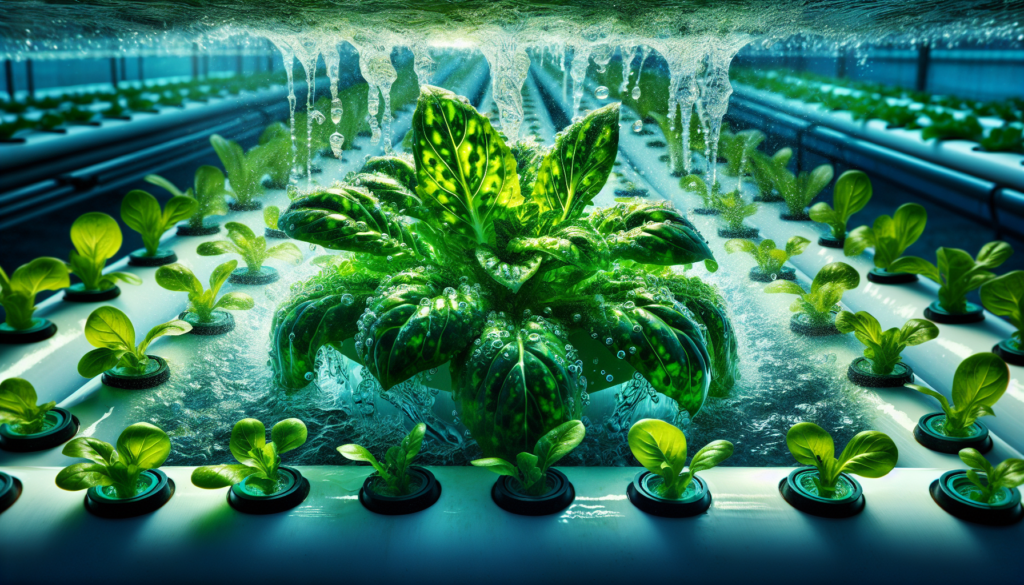Are you wondering which method is more efficient for growing your own herbs, veggies, and fruits? Well, let’s explore the age-old question: is aquaponics or hydroponics better? While both systems offer unique advantages, aquaponics stands out for its sustainable approach that combines aquaculture and hydroponics to create a mutually beneficial ecosystem. On the other hand, hydroponics involves a soilless technique that relies on a precise nutrient solution for plant growth. As we unfold the benefits and considerations of each method, we’ll also address the shipping restrictions for live fish in aquaponics, allowing you to make an informed choice that suits your gardening aspirations.
Is Aquaponics Or Hydroponics Better For Growing Herbs/Veggies/Fruits?
Introduction
When it comes to growing herbs, veggies, and fruits, aquaponics and hydroponics are two popular methods gaining attention among gardening enthusiasts. These innovative approaches offer unique ways to cultivate plants without soil, providing efficient and sustainable solutions for urban farming. In this article, we will explore the differences between aquaponics and hydroponics, the benefits and considerations of each method, as well as recommended plants and challenges associated with both systems. Additionally, we will also touch upon the shipping restrictions for live fish used in aquaponics.
What is Aquaponics?
Aquaponics is an integrated system that combines aquaculture (the farming of aquatic animals) and hydroponics (the cultivation of plants without soil) in a symbiotic environment. In an aquaponics setup, fish are raised in tanks, and their waste provides the nutrients necessary for plant growth. The plants, in turn, act as a natural filter, cleaning the water and creating a healthier environment for the fish.
What is Hydroponics?
Hydroponics, on the other hand, is a method of growing plants without soil, utilizing nutrient-rich water solutions to provide essential minerals and elements directly to the plant’s roots. In a hydroponic system, plants are typically grown in inert growing mediums, such as perlite or coconut coir, which support the roots while allowing them direct access to the nutrient solution.
Comparison of Aquaponics and Hydroponics
While both aquaponics and hydroponics are soilless cultivation methods, there are some fundamental differences between the two. The main distinction lies in the source of nutrients for plant growth. Aquaponics relies on fish waste as a natural fertilizer, whereas hydroponics utilizes nutrient solutions, often mixed from commercial formulations. Additionally, aquaponics systems require careful balance and maintenance of the aquatic ecosystem, whereas hydroponic systems focused solely on delivering the necessary nutrients to the plants.
Benefits of Aquaponics
One of the key benefits of aquaponics is its sustainable nature. With the integration of aquaculture and hydroponics, aquaponics uses significantly less water compared to traditional soil farming. The water in an aquaponics system is continually recirculated, and any excess nutrient-dense water can be reused for irrigation. Additionally, aquaponics eliminates the need for chemical fertilizers, as the fish waste naturally provides the nutrients required for plant growth. This organic approach not only promotes healthier plants but also reduces the environmental impact.
Benefits of Hydroponics
Hydroponics offers several advantages for growing herbs, veggies, and fruits. Firstly, hydroponic systems provide precise control over nutrient levels, pH, and other environmental factors, allowing plants to thrive in optimal conditions. This level of control can lead to increased plant growth rates and higher yields. Furthermore, because hydroponics eliminates the use of soil, there is a lower risk of pests, diseases, and weeds, resulting in cleaner and healthier plants. Lastly, hydroponics allows year-round cultivation, making it a suitable option for indoor gardening or in regions with unfavorable climates.
Considerations for Growing Herbs/Veggies/Fruits
Before deciding between aquaponics and hydroponics, it’s important to consider a few factors. Firstly, the amount of time and effort you are willing to invest in the system. Aquaponics systems require more attention as they involve maintaining a balanced ecosystem for both plants and fish. On the other hand, hydroponic systems, while still requiring monitoring, offer a simpler setup. Additionally, the availability of space should be taken into account, as aquaponics typically requires larger tanks for fish, while hydroponics can be more flexible in terms of scale and setup.
Recommended Plants for Aquaponics
Aquaponics systems can support a wide range of plants, including leafy greens, herbs, and certain fruiting plants. Some popular choices for aquaponic gardening include lettuce, spinach, basil, mint, chives, and tomatoes. Leafy greens generally thrive in these systems due to their ability to absorb nutrients effectively from the fish waste.
Recommended Plants for Hydroponics
Hydroponic systems provide an ideal environment for many plants, particularly those with shallow root systems. Greens such as lettuce, kale, and Swiss chard are commonly grown in hydroponics, as well as herbs like parsley, cilantro, and dill. Additionally, fruits such as strawberries and peppers can also flourish in hydroponic setups.
Challenges of Aquaponics
While aquaponics offers numerous benefits, there are some challenges to consider. Maintaining the proper balance between fish and plants can be intricate, requiring regular monitoring of water quality parameters such as ammonia, nitrite, and pH levels. Additionally, diseases or infections in the fish population can impact the overall health of the system, requiring swift action to prevent any further complications. It is important to have a good understanding of aquaculture and aquatic ecosystems to ensure a successful aquaponic endeavor.
Challenges of Hydroponics
While hydroponics may seem like a simpler option, it is not without its challenges. One crucial aspect is maintaining the nutrient solution’s balance, as imbalances can lead to nutrient deficiencies or toxicities in the plants. It is necessary to regularly measure and adjust the nutrient levels to provide an optimal growing environment. Furthermore, power outages or equipment malfunctions can pose significant risks in hydroponics, as plants solely rely on the provided liquid fertilizers and a disruption can quickly impact their health.
Shipping Restrictions for Live Fish in Aquaponics
If you are considering aquaponics and plan to incorporate fish into your system, it is essential to be aware of the shipping restrictions imposed on live fish. These restrictions vary by country and region, depending on local regulations and environmental considerations. To ensure compliance, it is advisable to research and consult with local authorities or reputable aquatic suppliers to understand the applicable rules and regulations regarding the transportation and ownership of live fish for aquaponics setups.
Conclusion
In conclusion, both aquaponics and hydroponics offer innovative and sustainable methods for growing herbs, veggies, and fruits. Aquaponics provides a symbiotic system that utilizes fish waste to nourish plants, resulting in organic and eco-friendly cultivation. On the other hand, hydroponics offers precise control over nutrient delivery and year-round cultivation possibilities. When deciding between the two, it’s important to consider personal preferences, available space, and maintenance capabilities. Whichever method you choose, both aquaponics and hydroponics open up exciting possibilities for urban gardening, enabling you to enjoy fresh produce right from your own home.


